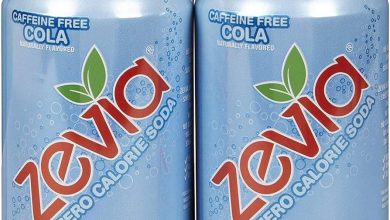Hazelnuts (Filberts) – A Nutritional Powerhouse
Hazelnuts, also known as filberts, are not only a delicious snack but also a nutritional powerhouse, packed with healthy fats, fiber, and a variety of essential vitamins and minerals. Whether used in baking, mixed into salads, or enjoyed on their own, these nuts offer a rich, creamy flavor with numerous health benefits. Below is a detailed breakdown of the nutritional information for hazelnuts, highlighting why they should be an essential part of your diet.
Nutritional Information (Per 100g)
| Nutrient | Amount |
|---|---|
| Energy | 628 kcal |
| Protein | 14.95 g |
| Fat | 60.75 g |
| Saturated Fats | 4.464 g |
| Carbohydrates | 16.7 g |
| Fiber | 9.7 g |
| Sugar | 4.34 g |
| Calcium | 114 mg |
| Iron | 4.7 mg |
| Magnesium | 163 mg |
| Phosphorus | 290 mg |
| Potassium | 680 mg |
| Sodium | 0 mg |
| Zinc | 2.45 mg |
| Copper | 1.725 µg |
| Manganese | 6.175 mg |
| Selenium | 2.4 µg |
| Vitamin C | 6.3 mg |
| Thiamin (Vitamin B1) | 0.643 mg |
| Riboflavin (Vitamin B2) | 0.113 mg |
| Niacin (Vitamin B3) | 1.8 mg |
| Vitamin B6 | 0.563 mg |
| Folate (Vitamin B9) | 113 µg |
| Vitamin B12 | 0 µg |
| Vitamin A | 1 µg |
| Vitamin E | 15.03 mg |
| Vitamin D2 | 0 µg |
Allergen Information
Hazelnuts are part of the tree nut family, which makes them a common allergen. Individuals with nut allergies should avoid hazelnuts, as they can trigger allergic reactions that range from mild to severe. Cross-contamination with other nuts may also occur during processing, so it is crucial to read labels carefully when purchasing hazelnuts or any hazelnut-based products.
Dietary Preferences
Hazelnuts are an excellent choice for various dietary preferences and lifestyles, including:
- Vegan and Vegetarian: Hazelnuts are plant-based and suitable for both vegan and vegetarian diets.
- Gluten-Free: Naturally gluten-free, making them an excellent option for those with gluten sensitivities or celiac disease.
- Keto and Low-Carb: With a relatively low carbohydrate content and high fat and protein levels, hazelnuts are an ideal snack for those following keto or low-carb diets.
- Paleo: Hazelnuts fit well within a paleo diet due to their natural, whole-food origin.
- High-Fiber: The fiber content in hazelnuts makes them a great addition to any high-fiber diet.
Health Benefits of Hazelnuts
-
Heart Health: Hazelnuts are rich in monounsaturated fats, which can help reduce bad cholesterol levels and support overall heart health. Their high magnesium content also contributes to heart function and vascular health.
-
Rich in Antioxidants: Hazelnuts contain vitamin E and other antioxidants that protect cells from oxidative stress and reduce the risk of chronic diseases. Vitamin E also supports skin health and can help prevent premature aging.
-
Bone Strength: The calcium, magnesium, and phosphorus content of hazelnuts supports strong bones and teeth. Regular consumption may contribute to improved bone density.
-
Digestive Health: Hazelnuts are a good source of dietary fiber, which aids in digestion and promotes regular bowel movements. The fiber content also helps regulate blood sugar levels, making them a great snack for those managing diabetes.
-
Weight Management: Despite their high fat content, hazelnuts are nutrient-dense and can contribute to a feeling of fullness and satiety, making them an excellent option for portion-controlled snacks. Their healthy fats and fiber content can help curb unhealthy cravings.
-
Brain Function: The combination of healthy fats, vitamins, and minerals in hazelnuts can support cognitive function, reduce inflammation, and potentially help lower the risk of neurodegenerative diseases.
Culinary Uses of Hazelnuts
Hazelnuts are versatile and can be incorporated into a wide variety of dishes. They are a favorite in baked goods, such as cookies, cakes, and pies, and can also be used in savory dishes. Here are a few creative ways to use hazelnuts in your cooking:
- Hazelnut Butter: Make your own creamy hazelnut butter by blending roasted hazelnuts in a food processor. You can spread it on toast, mix it into smoothies, or use it as a dip for fruit.
- Hazelnut Crusted Meat or Fish: Finely chop hazelnuts and use them as a crust for chicken, fish, or pork for a crunchy, flavorful coating.
- Salads: Add chopped hazelnuts to salads for an extra crunch, along with fresh fruits like apples or pears.
- Hazelnut Coffee: Grind hazelnuts and infuse them into coffee for a nutty twist on your morning brew.
- Baked Goods: Use chopped hazelnuts in cookies, muffins, or cakes, or as a topping for pies and tarts.
- Chocolate Hazelnut Spread: A classic combination of hazelnuts and chocolate, perfect for spreading on bread, pancakes, or waffles.
Conclusion
Hazelnuts (filberts) offer a delectable and nutrient-packed addition to your diet. From their heart-healthy fats to their impressive array of vitamins and minerals, they contribute to a wide range of health benefits while satisfying your taste buds. Whether you’re looking to incorporate more nutritious snacks into your routine or enhance your culinary creations, hazelnuts are an excellent choice. Enjoy them in a variety of forms, whether raw, roasted, or as part of a homemade nut butter, to reap the full range of health benefits they provide.










